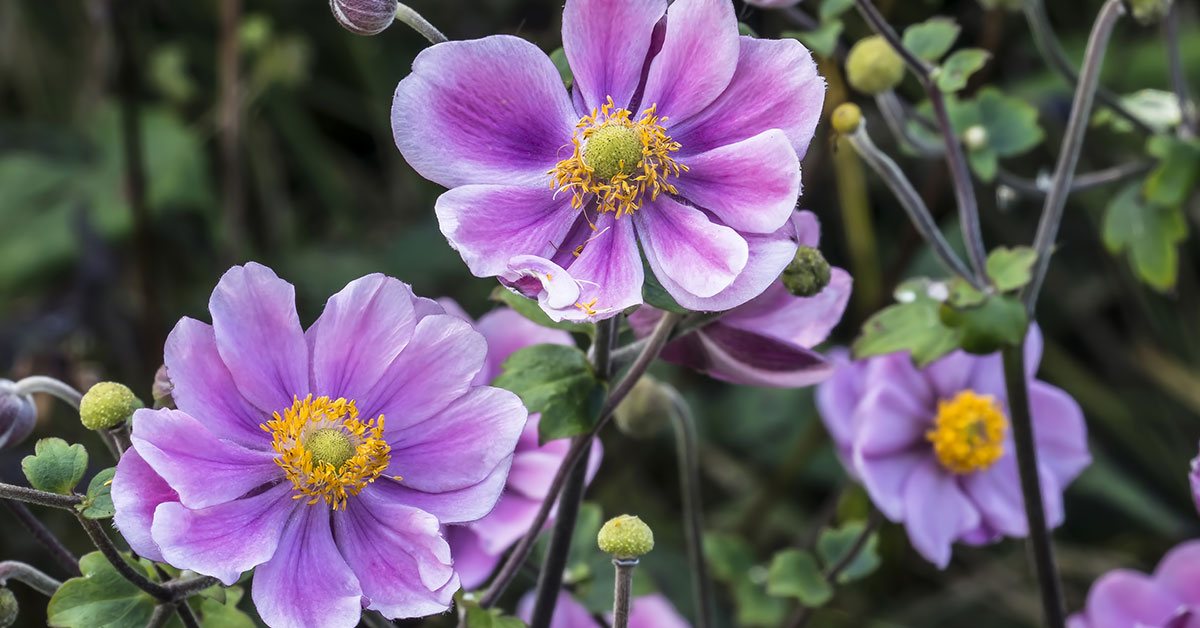Exuding charm and elegance, the Japanese Anemone is a garden gem that truly shines in the late summer and fall. Known for their graceful stems and captivating blooms, these plants have a way of stealing the spotlight just as many other plants are winding down for the year. This detailed article explores the Japanese Anemone, highlighting what they are, their appearance, native habitat, and invasiveness, as well as comprehensive instructions on how to grow and propagate these delightful perennials.
What is Japanese Anemone?
Japanese Anemone, scientifically known as Anemone hupehensis, is a perennial species in the buttercup family, Ranunculaceae. Despite its name, the plant’s origins trace back to the Hupeh province in eastern China and it was later naturalized in Japan, hence the name Japanese Anemone. They’re beloved for their late-season blooms and the graceful elegance they bring to garden landscapes.
What Does Japanese Anemone Look Like?
Japanese Anemones are characterized by their tall, wiry stems that rise above the foliage, reaching heights of 2 to 4 feet. At the top of these stems, you’ll find charming flowers that can be single or double, depending on the variety, typically blooming in shades of white, pink, or purple.
Each bloom has a ring of rounded or slightly pointed petals surrounding a central cluster of golden stamens, creating a beautiful contrast. The leaves are deeply lobed, dark green, and often form a clumping, mounding habit that provides an appealing backdrop for the delicate flowers.
Native Habitat and Invasiveness
While the common name suggests a Japanese origin, the Japanese Anemone is native to the Hupeh province in Eastern China and was later introduced to Japan where it has since naturalized. It thrives in woodland and meadow habitats where the soil is rich and well-draining.
While they can be somewhat vigorous, spreading through rhizomes, Japanese Anemones are not generally considered invasive. However, in optimal conditions, they can spread fairly extensively, so gardeners should plan accordingly when choosing a planting location.
How to Grow Japanese Anemone
Growing Japanese Anemones can be a rewarding endeavor, especially when you see the delightful blooms come alive in the late growing season. Here’s how to cultivate these captivating plants:
Location: Japanese Anemone thrives in partial shade but can tolerate full sun in cooler climates. They appreciate protection from the intense afternoon sun.
Soil: They prefer well-drained soil rich in organic matter. While they can handle a range of soil types, a slightly acidic to neutral pH is ideal.
Watering: Regular watering is crucial for Japanese Anemone, especially during dry periods. The soil should be kept evenly moist, but not waterlogged.
Fertilizing: A balanced, slow-release fertilizer applied in early spring should provide sufficient nutrients for the growing season.
Maintenance: Cut back the stems after the flowers have faded to keep the plant tidy. While Japanese Anemones can spread, their growth is relatively slow, and they don’t typically require division for the health of the plant.
Propagation
Propagation of Japanese Anemones is most commonly done through division or root cuttings.
Division: In early spring, carefully dig up the plant, preserving as many roots as possible. Divide the plant into sections, each with roots and shoots, and replant promptly.
Root Cuttings: You can also take root cuttings in late winter. Dig up a section of roots and cut them into pieces about 2 inches long. Plant these horizontally in pots filled with a mix of sand and compost, covering lightly with the mix. Keep in a cold frame or similar location until new growth appears, then transplant.
In conclusion, Japanese Anemones offer an exquisite display of late-season blooms and a charm that can elevate any garden. With the right planting site, care, and propagation techniques, you can enjoy the enchanting dance of the Japanese Anemone in your garden year after year.













